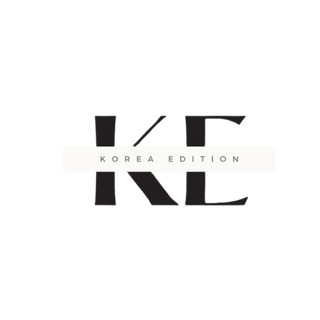Procedure Overview
Facial contour surgery is a specialized set of procedures designed to enhance the shape and structure of the face, creating a more balanced and aesthetically pleasing appearance. It targets the bones and soft tissues to improve facial harmony. The most common types of facial contouring procedures include:
- V-Line Surgery: Reshapes the jawline to create a slimmer, more defined V-shaped face.
- Cheekbone Reduction (Zygoma Reduction): Reduces prominent cheekbones for a smoother, more proportionate facial contour.
- Chin Augmentation/Reduction: Adjusts the size or shape of the chin to achieve better facial balance.
- Jaw Reduction: Narrows the lower jaw for a more refined and feminine look.
Goals of the Surgery
The primary goals of facial contour surgery are to:
- Enhance facial symmetry and balance.
- Soften sharp or prominent facial features.
- Create a more youthful and harmonious appearance.
- Improve self-confidence by aligning facial features with personal aesthetic desires.
Pros and Cons of V-Line Surgery
Pros:
- Creates a slimmer, more attractive jawline.
- Enhances overall facial harmony and balance.
- Permanent results with a relatively quick recovery compared to other facial surgeries.
Cons:
- Potential for numbness or nerve damage in the jaw area.
- Requires a skilled surgeon to avoid asymmetry or overcorrection.
- Not suitable for everyone, particularly those with certain medical conditions or bone structures.
How It Works
Facial contour surgery typically involves:
- Consultation: A detailed assessment of facial structure and discussion of aesthetic goals.
- Surgical Planning: Customized surgical plan based on individual facial anatomy.
- Procedure: Performed under general anesthesia, involving bone reshaping and soft tissue adjustment.
- Post-Surgery Care: Follow-up consultations and care to monitor healing and outcomes.
Preparation Before Surgery
- Medical Evaluation: Comprehensive health check-up to ensure fitness for surgery.
- Lifestyle Adjustments: Avoid smoking and certain medications that can affect healing.
- Pre-Surgical Instructions: Detailed guidance on fasting, medications, and skincare before the procedure.
Recovery After Surgery
- Initial Recovery: Swelling and discomfort typically subside within a week.
- Full Recovery: Most patients return to normal activities within 2-4 weeks, with complete healing and final results visible after several months.
- Aftercare: Follow your surgeon’s instructions for wound care, dietary adjustments, and physical activity restrictions to ensure optimal healing.
Risks & Side Effects
- Common risks include swelling, bruising, and temporary numbness.
- Rare but serious complications can include infection, nerve damage, or asymmetry.
- It’s essential to choose an experienced surgeon to minimize risks.
FAQs
Q: How long does the surgery take?
A: The duration varies depending on the specific procedure but typically ranges from 2 to 4 hours.
Q: Will there be visible scars?
A: Most incisions are made inside the mouth or in inconspicuous areas, minimizing visible scarring.
Q: Is the procedure painful?
A: Discomfort is common but manageable with prescribed pain medication.
Q: How soon can I see the results?
A: Initial improvements are visible within weeks, but the final results can take several months to fully develop.
Q: Can I combine facial contour surgery with other procedures?
A: Yes, many patients opt to combine it with other cosmetic surgeries like rhinoplasty or eyelid surgery for a more comprehensive makeover.
Add some text to tell customers more about your product.
Procedure Overview
Facial contour surgery is a specialized set of procedures designed to enhance the shape and structure of the face, creating a more balanced and aesthetically pleasing appearance. It targets the bones and soft tissues to improve facial harmony. The most common types of facial contouring procedures include:
- V-Line Surgery: Reshapes the jawline to create a slimmer, more defined V-shaped face.
- Cheekbone Reduction (Zygoma Reduction): Reduces prominent cheekbones for a smoother, more proportionate facial contour.
- Chin Augmentation/Reduction: Adjusts the size or shape of the chin to achieve better facial balance.
- Jaw Reduction: Narrows the lower jaw for a more refined and feminine look.
Goals of the Surgery
The primary goals of facial contour surgery are to:
- Enhance facial symmetry and balance.
- Soften sharp or prominent facial features.
- Create a more youthful and harmonious appearance.
- Improve self-confidence by aligning facial features with personal aesthetic desires.
Pros and Cons of V-Line Surgery
Pros:
- Creates a slimmer, more attractive jawline.
- Enhances overall facial harmony and balance.
- Permanent results with a relatively quick recovery compared to other facial surgeries.
Cons:
- Potential for numbness or nerve damage in the jaw area.
- Requires a skilled surgeon to avoid asymmetry or overcorrection.
- Not suitable for everyone, particularly those with certain medical conditions or bone structures.
How It Works
Facial contour surgery typically involves:
- Consultation: A detailed assessment of facial structure and discussion of aesthetic goals.
- Surgical Planning: Customized surgical plan based on individual facial anatomy.
- Procedure: Performed under general anesthesia, involving bone reshaping and soft tissue adjustment.
- Post-Surgery Care: Follow-up consultations and care to monitor healing and outcomes.
Preparation Before Surgery
- Medical Evaluation: Comprehensive health check-up to ensure fitness for surgery.
- Lifestyle Adjustments: Avoid smoking and certain medications that can affect healing.
- Pre-Surgical Instructions: Detailed guidance on fasting, medications, and skincare before the procedure.
Recovery After Surgery
- Initial Recovery: Swelling and discomfort typically subside within a week.
- Full Recovery: Most patients return to normal activities within 2-4 weeks, with complete healing and final results visible after several months.
- Aftercare: Follow your surgeon’s instructions for wound care, dietary adjustments, and physical activity restrictions to ensure optimal healing.
Risks & Side Effects
- Common risks include swelling, bruising, and temporary numbness.
- Rare but serious complications can include infection, nerve damage, or asymmetry.
- It’s essential to choose an experienced surgeon to minimize risks.
FAQs
Q: How long does the surgery take?
A: The duration varies depending on the specific procedure but typically ranges from 2 to 4 hours.
Q: Will there be visible scars?
A: Most incisions are made inside the mouth or in inconspicuous areas, minimizing visible scarring.
Q: Is the procedure painful?
A: Discomfort is common but manageable with prescribed pain medication.
Q: How soon can I see the results?
A: Initial improvements are visible within weeks, but the final results can take several months to fully develop.
Q: Can I combine facial contour surgery with other procedures?
A: Yes, many patients opt to combine it with other cosmetic surgeries like rhinoplasty or eyelid surgery for a more comprehensive makeover.
Add some text to tell customers more about your product.
Use a multi-column section to organize detailed information about your products:
Column
Use text to focus on your chosen product, collection, or blog post.
Column
Use text to focus on your chosen product, collection, or blog post.
Column
Use text to focus on your chosen product, collection, or blog post.
Accent
Image hero
Use these sections to promote a particular feature with editorial photography.
Image with text
Use these sections to promote a particular feature with editorial photography
Image with text
Use these sections to promote a particular feature with editorial photography

